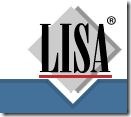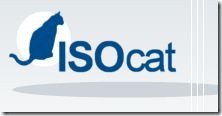In If quantity matters, what about quality? I promised to shed some light on how to achieve quantity without skimping on quality. In knowledge management, it boils down to solid processes supported by reliable and appropriate tools and executed by skilled people. Let me drill down on some aspects of setting up processes and tools to support quantity and quality.
If you cannot afford to build up an encyclopedia for your company (and who can?), select metadata carefully. The number and types of data categories (DCs), as discussed in The Year of Standards, can make a big difference. That is not to say use less. Use the right ones for your environment.
Along those lines, hide data categories or values where they don’t make sense. For example, don’t display Grammatical Gender when Language=English; invariably a terminologist will accidentally select a gender, and if only a few users wonder why that is or note the error, but can’t find a way to alert you to it, too much time is wasted. Similarly, hide Grammatical Number, when the Part of Speech=Verb, and so on.
Plan dependent data, such as product and version, carefully. For example, if versions for all your products are numbered the same way (e.g. 1, 2, 3,..), it might be easiest to have two related tables. If most of your versions have very different version names, you could have one table that lists product and version together (e.g. Windows 95, Windows 2000, Windows XP, …); it makes information retrievable slightly simpler especially for non-expert users. Or maybe you cannot afford or don’t need to manage down to the version level because you are in a highly dynamic environment.
 Enforce mandatory data when a terminologist releases (approves or fails) an entry. If you decided that five out of your ten DCs are mandatory, let the tool help terminologists by not letting them get away with a shortcut or an oversight.
Enforce mandatory data when a terminologist releases (approves or fails) an entry. If you decided that five out of your ten DCs are mandatory, let the tool help terminologists by not letting them get away with a shortcut or an oversight.
It is obviously not an easy task to anticipate what you need in your environment. But well-designed tools and processes support high quality AND quantity and therefore boost your return on investment.
On a personal note, Anton is exhausted with anticipation of our big upcoming event: He will be the ring bearer in our wedding this weekend.

